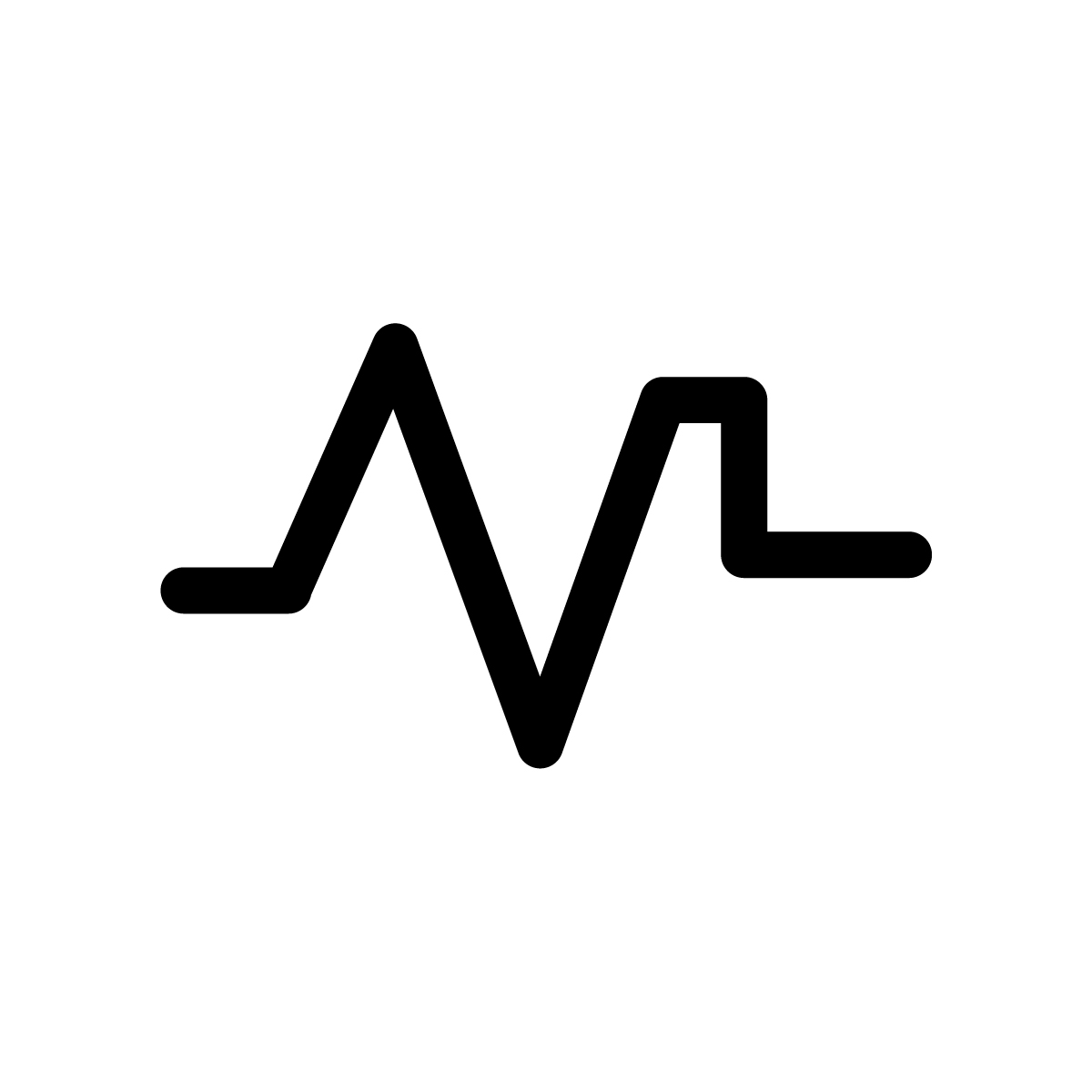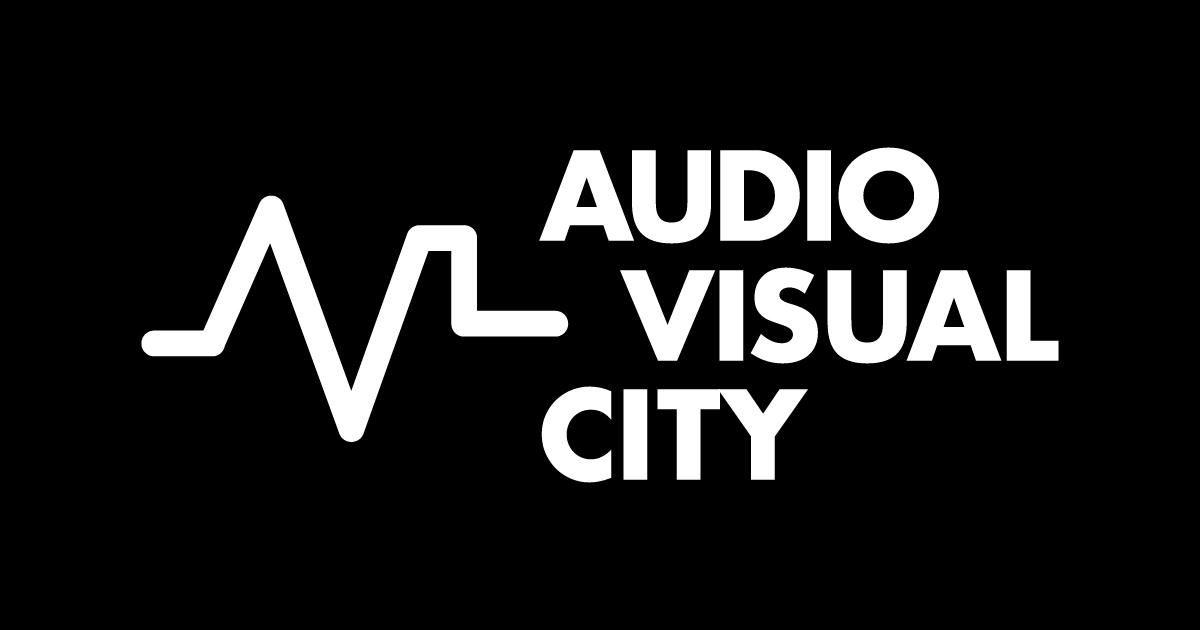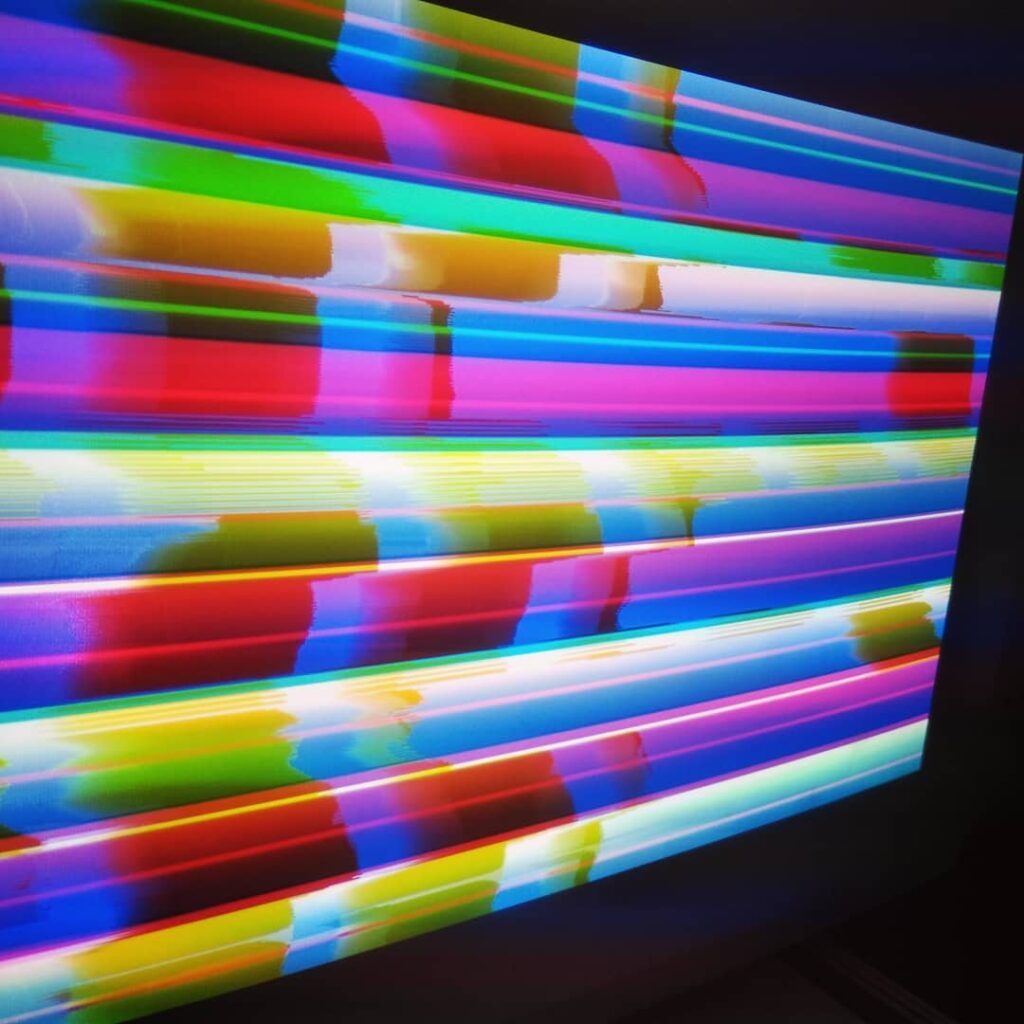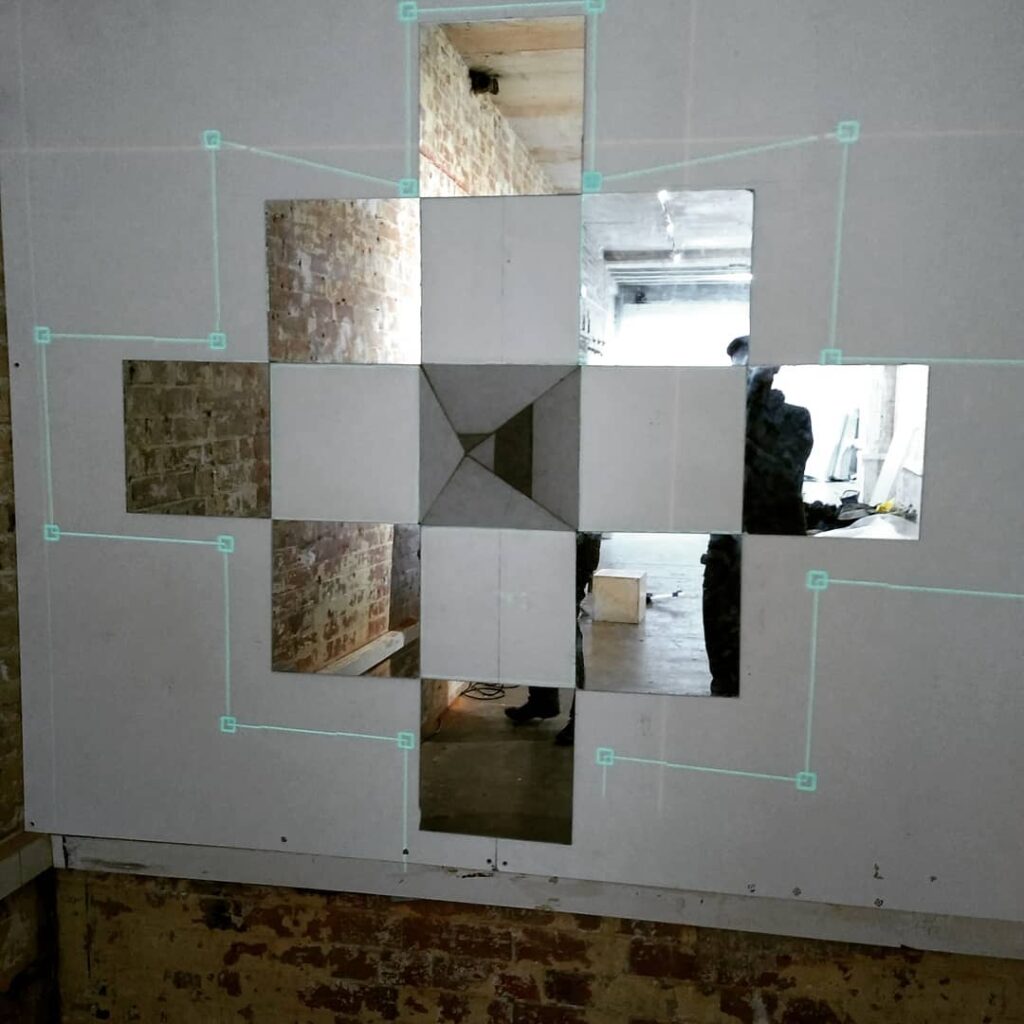Audiovisual City went to a VJ London meeting and interviewed three audiovisual artists: Mowgli, Marta, and Pete.
AVC: Can you tell us something about yourself?
Mowgli: My first job out of school was DJ, I literally left school and I started working in a club fulltime as a DJ. One day I went to see my friend’s band play -they’re kind of a post-rock band- and he asked me after the gig what I thought about it and I thought it was great but it was quite boring to look at them. There was no frontman, and there’s no singer. They all just looked at the floor. They needed some visuals. And he said to me, “You do them”. And that was my first VJ’ing gig. That’s how I got into VJ’ing.
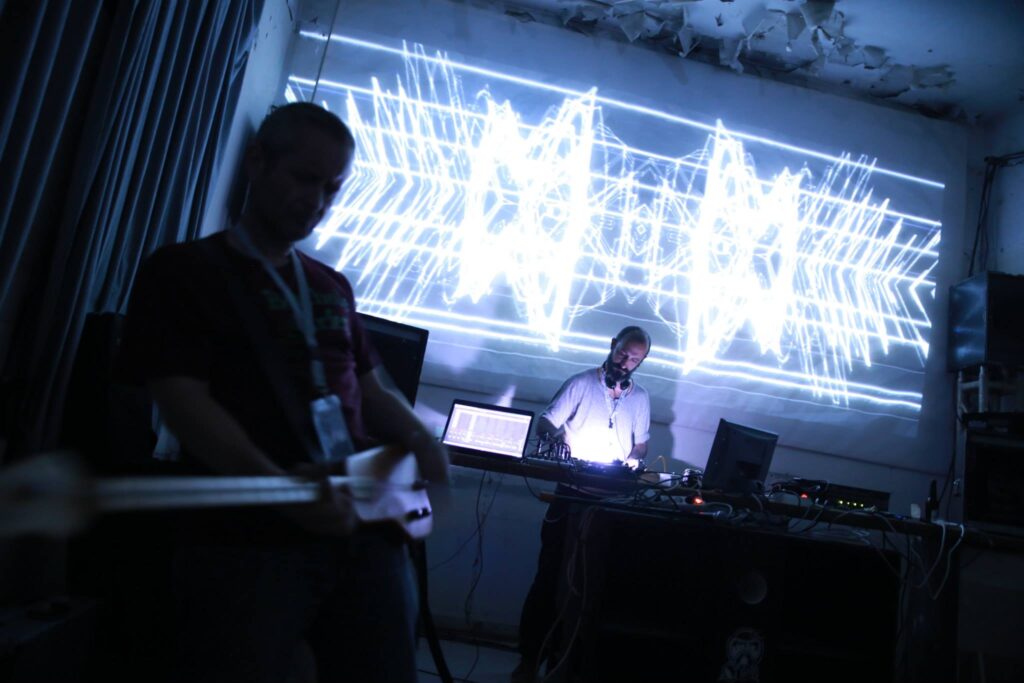
I mean, I’ve done visuals before but I never even thought it was a thing. I was just doing visuals with light projections but there was no VJ’ing. It was just ‘I’m putting a light projector in a club’. From there on I started to get into the VJ thing and I started doing visuals more and more. I started doing like corporate stuff and then I started coming to VJ London.
Suddenly it expanded and I realized that there were more and more people what I was doing and that it had a name. From there, in 2008, they did a VJ competition at the London International Music Show. Which happens every year. I was selected as one of the eight finalists of Europe for that. I didn’t win but it was a big thing at the time.
I played at the Big Chill festival. I play loads of festivals. Moving on from the VJ’ing, I started doing audiovisual performances. Which is what I do mostly nowadays. But I also started doing more interactive stuff. I had an award-winning installation at Burning Man, in 2011.
Marta: I’m a visual artist/ designer with a passion for performing arts. My artistic development has been initially shaped at The High School of Fine Arts in Krakow and later I mastered my skills in studying graphic design at the Pedagogical University of Krakow. I’ve got over 8 years of experience of creating video projections, mappings and LED installations for various music, arts, and events related projects. I’ve worked as a VJ at cyclical gigs in Krakow and London. During that time I collaborated with many musicians and artists from all around the world and I was a resident VJ at Prince of Wales, London.
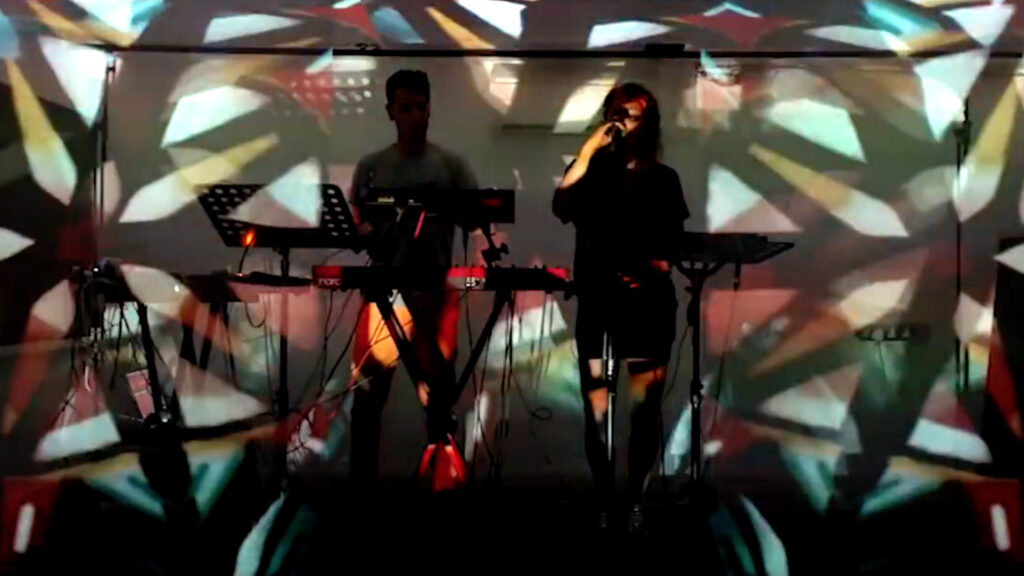
Pete: I don’t think I consider myself a VJ anymore because I rarely do VJ’ing anymore for other people. I still love the culture and I believe that it’s something very important in my life, however, the last gig I did was like a half year ago in Brighton. It was a commercial gig and I completely hated it. Because basically, it was… I kind of forgot how the commercial part of VJ’ing looked like, so I was being asked to just show the logos. And people kept coming over to me that it was the wrong logo but they didn’t even bother me to give it to me before.
So I would say that a lot of stuff in my life happened because of the VJ’ing, but I don’t consider myself a VJ anymore.
AVC: What drew you into the AV culture?
Mowgli: I’ve always liked doing creative things but I’ve never had an agenda. I was never like ‘I wanna pursue that’. I’ve always been very open. So most of the things I’ve done, I’ve done because something’s happened. Something’s taken me down that road. But it wasn’t really a conscious thing most of the time. So getting a DJ job straight out of school, that was a complete coincidence. Like I used to go to this club with a friend of mine in Madrid, and it was a very niche club at that point in time. And then one day a DJ who worked there came over to us and said, “You two have got most of the records that we play here, right?” And we were like, “Yea, yea”. She told me that she wanted to go on a holiday but needed to find a replacement. She asked us to take over and we did. And she was never taken back by the club.
We basically stole her job. She gave us her job and then it was never given back to. But I never went out looking for that. It just happened. It’s the same with like doing VJ’ing. A friend of mine said, “Oh, you do it”. And then I was like, “Oh yea, I’ll do it”. And from then on, I mean that was the start really. With my friend saying that I should do it and then me getting more and more interested in it. And looking more into it and learning more things. Developing in that direction. And very involved in that use of technology.
Marta: In 2010, when I was living and studying in Krakow, I went to Jonsi’s concert during the Sacrum Profanum Festival. I didn’t expect that event to set a new direction in my life, I didn’t even plan to go there, it was very last minute, my friend gave me a spare ticket. I liked the concert a lot and I was absolutely amazed by the visual part of the show. Projection, lights, music and space, everything together was combined perfectly and it was a beautiful experience. I was so moved and inspired that at that moment I decided this is what I want to do in my life.
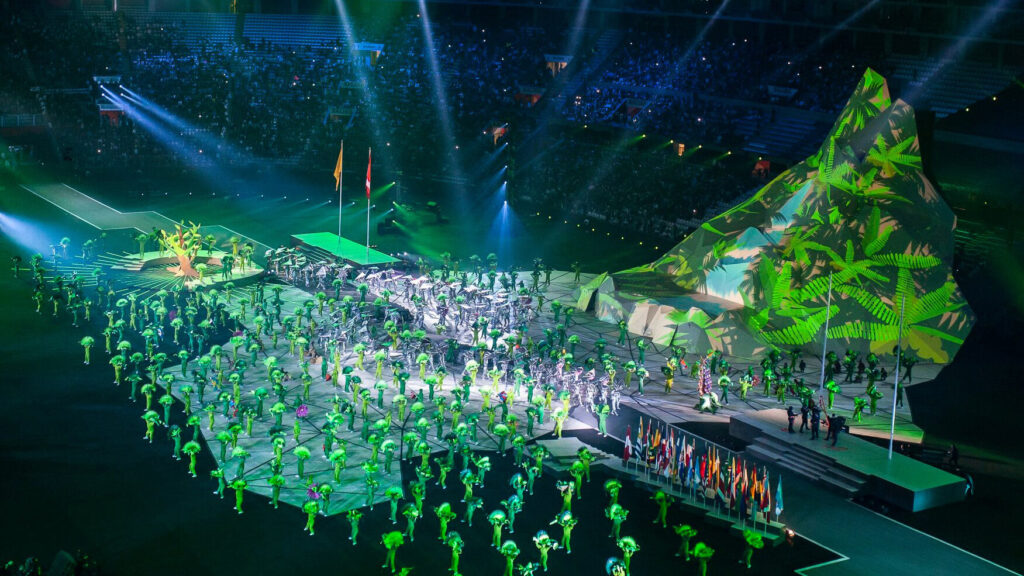
In a very short time, I quit my job and I booked my first gig where I was going to do live visuals. It went pretty good and since then I worked as a VJ. I had a few other jobs in the meantime, but I never gave up my passion. I was lucky to meet many great people and we’ve done some awesome shows together. Three years ago I moved to London. I found the company that designed Jonsi’s live show that I saw in Krakow 8 years ago. It’s 59 Productions and another amazing part of this story is that now I work there.
Pete: Well, the thing is the VJ’ing is one thing and the audiovisual culture is some other thing. They’re not the same thing. They’re interconnected however, there are slight differences. Because for me it’s kind of the natural way of progressing from a purely visual side. Whilst to try to do audiovisual performances with people. Because I realized this is a powerful way of making people feel something.
However, my visual adventure started in coding. I was a programmer and I did graphics before it even was a thing and a name. I made the demos in 1996… 1998, I was sixteen back then. So that was my whole root of digital creativity. That’s where everything stems from. Because it kind of converted into the audiovisual performance group. They were playing the ambient music and I was playing the graphics. So my roots were actually in programming.
At the moment I mostly work as a creative developer. And I try to focus my activity on VR because I believe that is the next step forward. Because this is something that is the next level. You can not only the audio but also the visuals and movements, that gives you a very powerful storytelling opportunity.
AVC: What about your current and future projects?
Mowgli: I tend not to think about the future. As I said, I just go along and do things and keep evolving and suddenly… I’m easily distracted. I have millions of projects that I never finish. Like, I start something feeling excited, but halfway through I get excited by something else and pause the first one. And then sometimes I do go back to the previous things but not really finish them but utilize whatever state they’re in and doing something completely different. I recycle my stuff.
The thing I’ve been working on most in the last couple of years is an audiovisual synthesizer. Which sounds great but in reality it’s a mini-controller that’s mapped to both able in Live and Resolume. But I don’t need to look at the computer screen. It’s basically like a really big mini-controller with loads of sliders and stuff. And using that, I do audiovisual performances which are always improvised. It’s got generative visuals. And generative audio in a way. It’s about the interface. You just fiddle with the knobs and create visuals and audio at the same time. And I’ve been doing that for a while. So I’m starting to think I need to do a newer version of that.
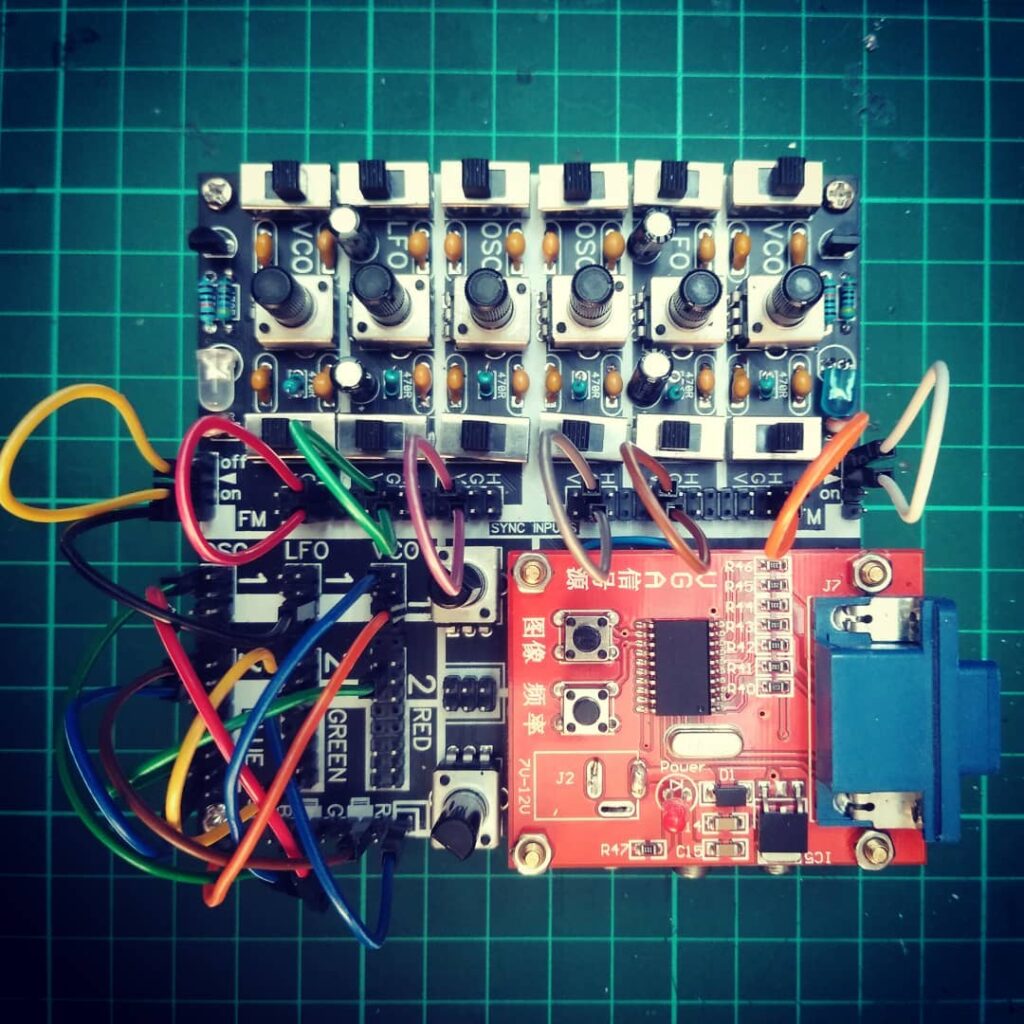
I got lots of ideas on how to make it better and whatever, so that’s one thing.
On the other side, I’m also getting more interested in doing just sound performances with no visuals. Because I’ve been getting more and more into them… I don’t want to call it music and call myself a musician. I don’t have enough musical training. I like making sounds.
It’s all just an exploration. Sometimes the stuff you stumble on and make is really bad and other times it’ll be really good. You just gotta roll with it.
Marta: Before joining 59 Productions I was working as a freelancer, mostly for music-related events, a huge part of that was live electronic music. My visuals were characterized by multiple dissolving and interfusing layers. With time, my work got more minimalistic and monochromatic.
I’m interested in creating interactive installations and audiovisual artworks that allows an audience to be a part of the performance, to experience sound, lights, and projections surrounding them. In order to achieve that I play with dimensions and visual perception, make projection seem 3-dimensional. I design shapes to project onto them or I use object and surfaces already existing in the space. My shows were never 100% planned, there was always lots of space for improvisation.
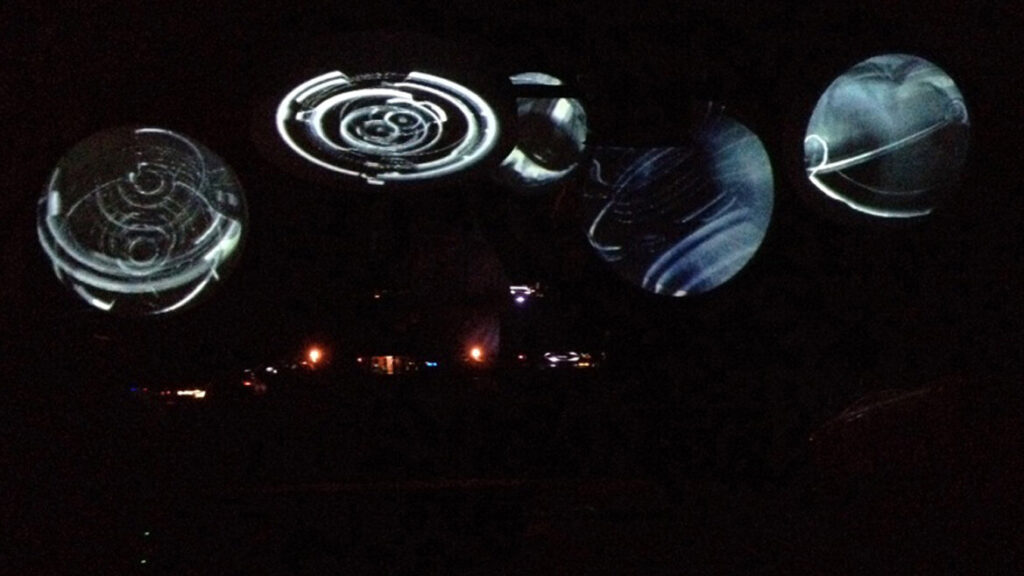
Currently, I am a part of a design team at 59 Productions– a company of artists creating video design for stage and live events. I assist with artwork and animation content for the show. Since joining 5 months ago I’ve worked on a variety of theatre, exhibition and VR projects, including an exhibition for Imperial War Museum in London, VR artwork ‘Nothing to be Written’ and ‘Deep Field’- a film inspired by the Hubble Space Telescope discovery. Most recently I was working on ‘Black and White’- a theatrical show produced by JACC in Kuwait. It was a great opportunity for me to get to know more about a narrative type of visual arts.
I’m looking forward to taking up new design challenges.
Pete: At the moment I’ve done some commercial projects for different companies. However, I have been getting more involved in tech. Because the big part of the whole audiovisual immersive business is knowing how to deal with tech. How to make tech do what you want them to do.
I found it really interesting to do this for a commercial purpose and reuse to my personal projects. So this year, because of my own personal circumstances, I was mostly focusing on commercial projects which might not have been that interesting. But one of the things I did this year that I want to continue with next year is an audiovisual look machine. That’s a project I’ve been doing for the last two-three years and with different people. We’re playing some events as well.
Hopefully, I’m going to reach a state where I go from software working progress and turn it into a hardware working instrument. And the other project is basically I want to explore more of the new technology with VR. With a new headset that’s cheap enough for people to buy it.
